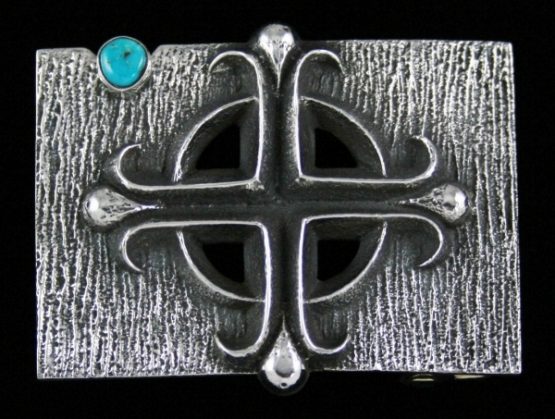The late Thomas Curtis is one of the most revered Native
American jewelry designers. He was a master of handcrafted die sets. Growing up
in a family of silversmiths, Curtis also pursued jewelry making and was in the
business for over five decades. Throughout his career as a jewelry designer, he
received countless awards and accolades from prestigious organizations. Thomas
made everything by hand. His handmade die sets were carefully crafted from
hardened steel which were then used to stamp his silver jewelry. He also used
chisels to flawlessly carve silver.
The most distinguishing characteristics of Curtis’ style
are the hand-tooled details. The use of precious stones is also apparent in
many of his works, including his belt buckles. Bracelets and cuffs created by
Thomas feature unique patterns. He had a keen eye for pattern coordination and
shape combinations. His die casts always offer interesting textures, adding
elegant overall aesthetic to each jewelry piece.
Thomas’ fame continues to live on even after his death in
2013. Collectors worldwide seek to buy his work, which has already increased in
value significantly. Even before his passing, Curtis’ jewelry pieces would
usually sell out due to their unbelievable details. He is well-known for his
intricate silverwork and handcrafted details. One of his popular pieces is the
silver ring reminiscent of tire track designs. Using fine reverse stamping, he
was able to create a complex interwoven design that is unlike any other.
You can still find Thomas Curtis
pieces online. Make sure to purchase from reputable sellers if you want an
authentic piece of art, history, and culture. Aside from rings and belt
buckles, you can also purchase bracelets, cuffs, bolo ties, and even art pieces
created by Thomas Curtis. Sellers must include a certificate of authenticity
along with your purchase.

